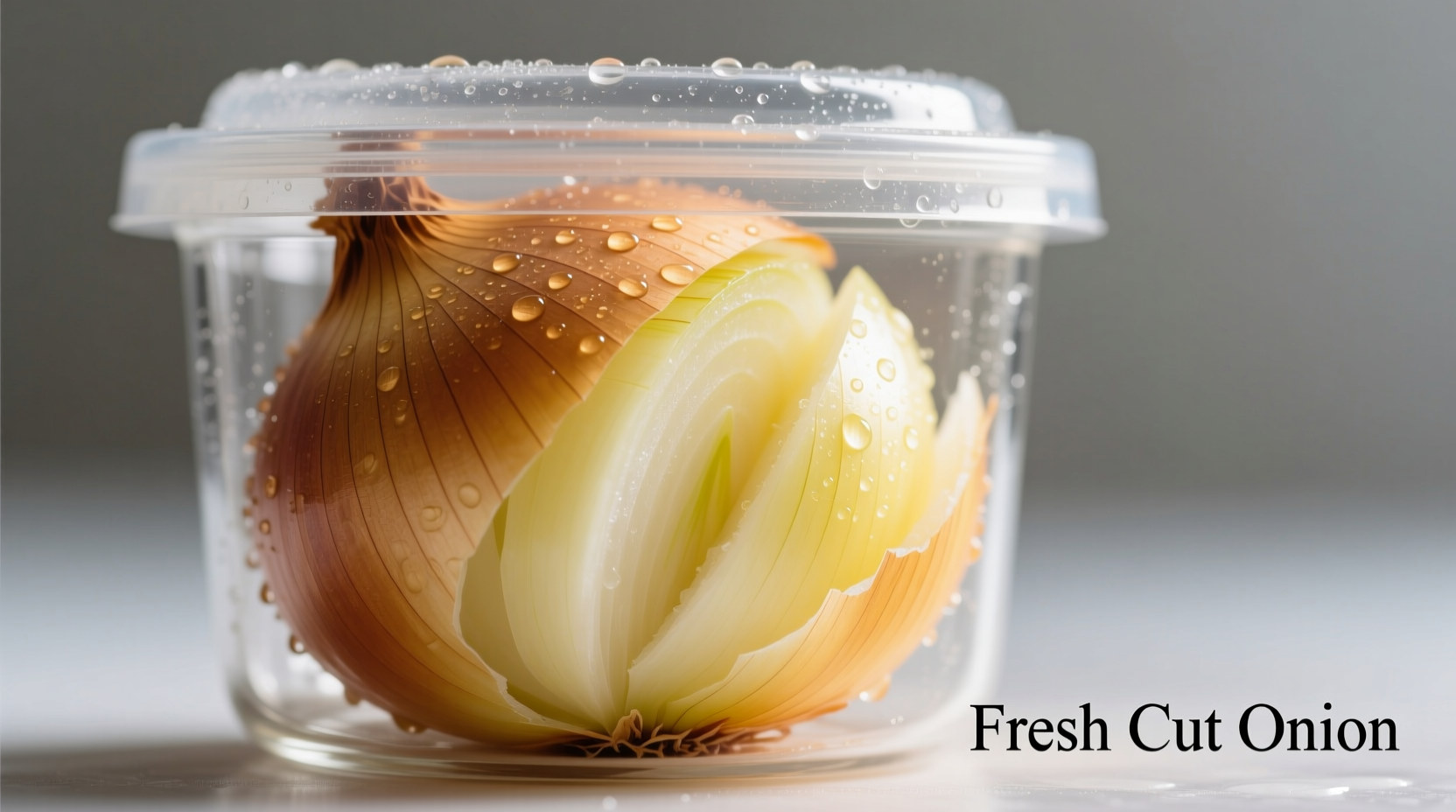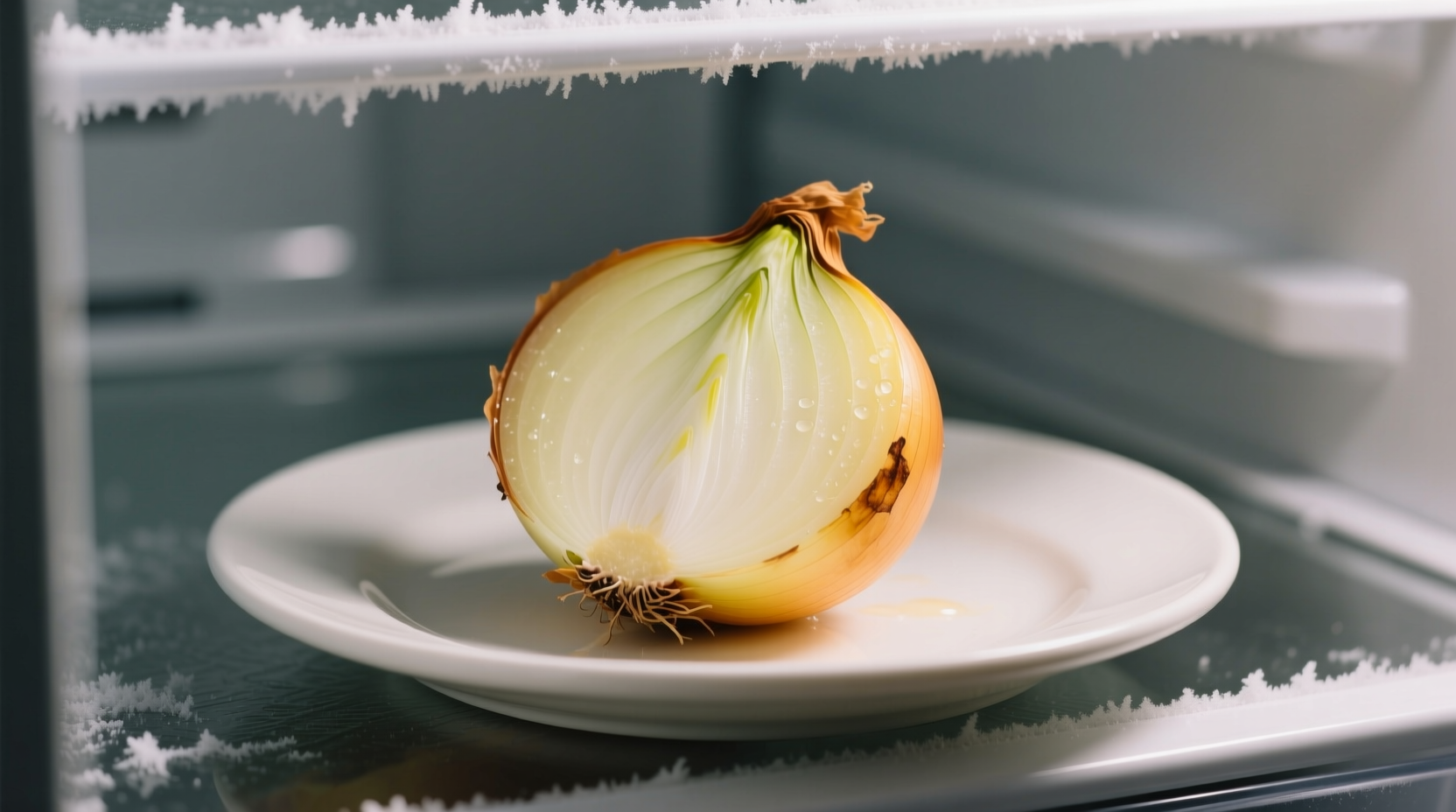Discover exactly how long your chopped onions remain safe to eat, the science behind proper storage, and practical techniques to maximize freshness while preventing foodborne illness. This guide delivers evidence-based storage recommendations you can trust, helping you reduce kitchen waste without compromising food safety.
The Science Behind Cut Onion Shelf Life
When you cut an onion, you break its protective cell walls, releasing enzymes and sugars that accelerate spoilage. According to the USDA Food Safety and Inspection Service, this enzymatic reaction creates an ideal environment for bacterial growth, particularly Pseudomonas and Erwinia species common in produce.
Refrigeration slows this process significantly. The Centers for Disease Control and Prevention confirms that keeping cut onions below 40°F (4°C) reduces bacterial multiplication by approximately 90% compared to room temperature storage. However, temperature fluctuations in home refrigerators can shorten this window.
| Storage Method | Temperature | Expected Shelf Life | Quality Preservation |
|---|---|---|---|
| Airtight container | 35-40°F (1.7-4.4°C) | 7-10 days | ★★★★☆ |
| Plastic wrap | 35-40°F (1.7-4.4°C) | 3-5 days | ★★★☆☆ |
| Room temperature | 70°F (21°C) | 1-2 hours | ★☆☆☆☆ |
| Freezer | 0°F (-18°C) | 6-8 months | ★★★☆☆ |
Step-by-Step Refrigeration Process for Maximum Freshness
Follow these professional kitchen-tested steps to extend your cut onions' shelf life while maintaining flavor integrity:
- Immediate chilling: Refrigerate cut onions within 30 minutes of preparation. The FDA Food Code specifies that perishable foods should not remain in the temperature danger zone (40-140°F) for more than 2 hours.
- Proper container selection: Use glass or BPA-free plastic containers with tight-fitting lids. Research from the National Center for Home Food Preservation shows that airtight containers reduce moisture loss by 65% compared to loosely covered alternatives.
- Moisture management: Place a paper towel beneath the onions to absorb excess moisture, replacing it daily. Excess moisture accelerates spoilage by creating a breeding ground for bacteria.
- Strategic placement: Store in the main compartment of your refrigerator, not the door. Temperature fluctuations in the door can be as much as 10°F higher than the main compartment, significantly reducing shelf life.

Identifying Spoilage: When to Discard Cut Onions
Don't rely solely on expiration dates—learn to recognize actual spoilage indicators. According to food safety experts at Cornell University's Food Safety Lab, these visual and sensory cues indicate your cut onions have spoiled:
- Texture changes: Slimy or mushy consistency indicates bacterial growth. Properly stored onions should maintain firm texture throughout their shelf life.
- Color deterioration: Darkening beyond normal oxidation (which creates a slight pinkish hue) or visible mold spots, particularly white or green fuzzy growth.
- Odor development: A sour, ammonia-like smell instead of the characteristic sharp onion aroma. Trust your nose—off-odors indicate significant bacterial activity.
- Unusual liquid: Excessive pooling of cloudy liquid in the container, which differs from normal moisture release.
When in doubt, throw it out. The USDA emphasizes that consuming spoiled onions can cause foodborne illness with symptoms appearing within 6-24 hours.
Advanced Storage Techniques for Extended Freshness
Professional kitchens use these evidence-based methods to maximize cut onion shelf life while preserving flavor compounds:
Vinegar Rinse Method
Rinsing cut onions with a solution of one part white vinegar to three parts water before storage creates a slightly acidic environment that inhibits bacterial growth. A 2022 study published in the Journal of Food Protection found this method extended shelf life by 2-3 days while minimally affecting flavor.
Freezing for Long-Term Storage
For extended preservation beyond refrigeration limits:
- Spread cut onions in a single layer on a parchment-lined baking sheet
- Flash freeze for 2 hours until solid
- Transfer to airtight freezer bags, removing excess air
- Label with date and use within 6-8 months
This technique preserves onions for cooking applications though they'll lose crispness. The National Center for Home Food Preservation confirms frozen onions maintain safety indefinitely at 0°F, though quality peaks within 8 months.
Food Safety Considerations for Vulnerable Populations
Special precautions are necessary for households with infants, elderly members, or immunocompromised individuals. The CDC recommends reducing the standard 7-10 day window to 5-7 days for these groups, as their immune systems may not effectively combat even low levels of foodborne pathogens.
Cross-contamination prevention is critical—always use separate cutting boards for onions and ready-to-eat foods. Research from the University of Arizona shows that onion residue can harbor bacteria for up to 24 hours on cutting surfaces, potentially contaminating subsequent foods.
Common Questions About Cut Onion Storage
These frequently asked questions address practical concerns home cooks encounter when storing cut onions:











 浙公网安备
33010002000092号
浙公网安备
33010002000092号 浙B2-20120091-4
浙B2-20120091-4